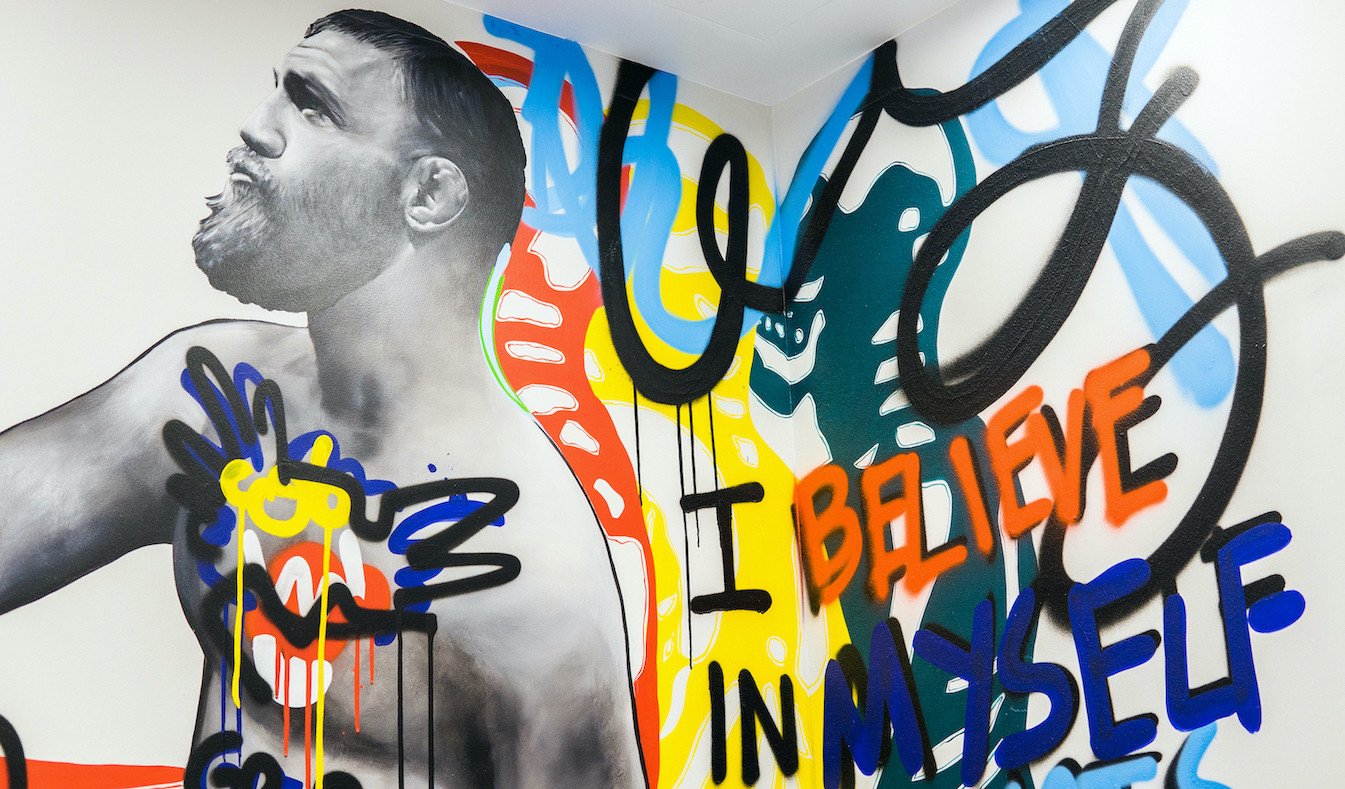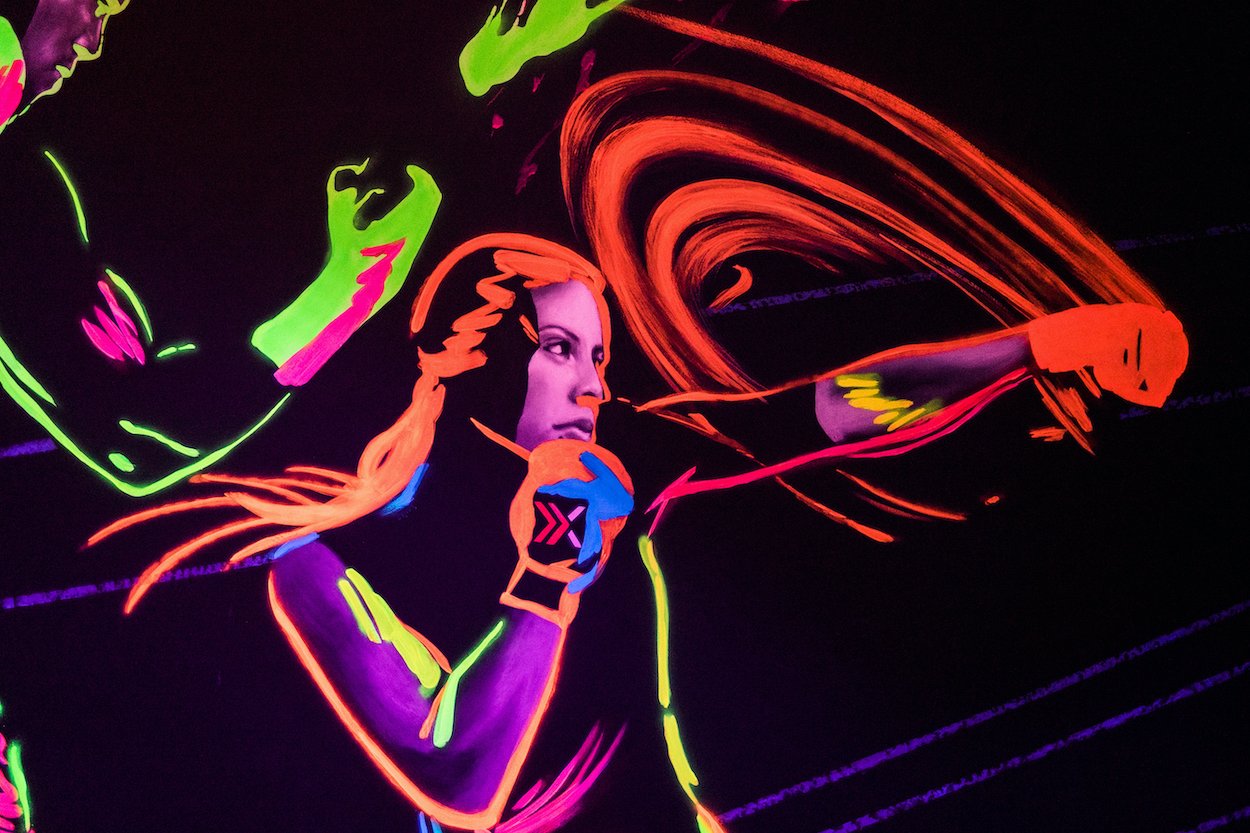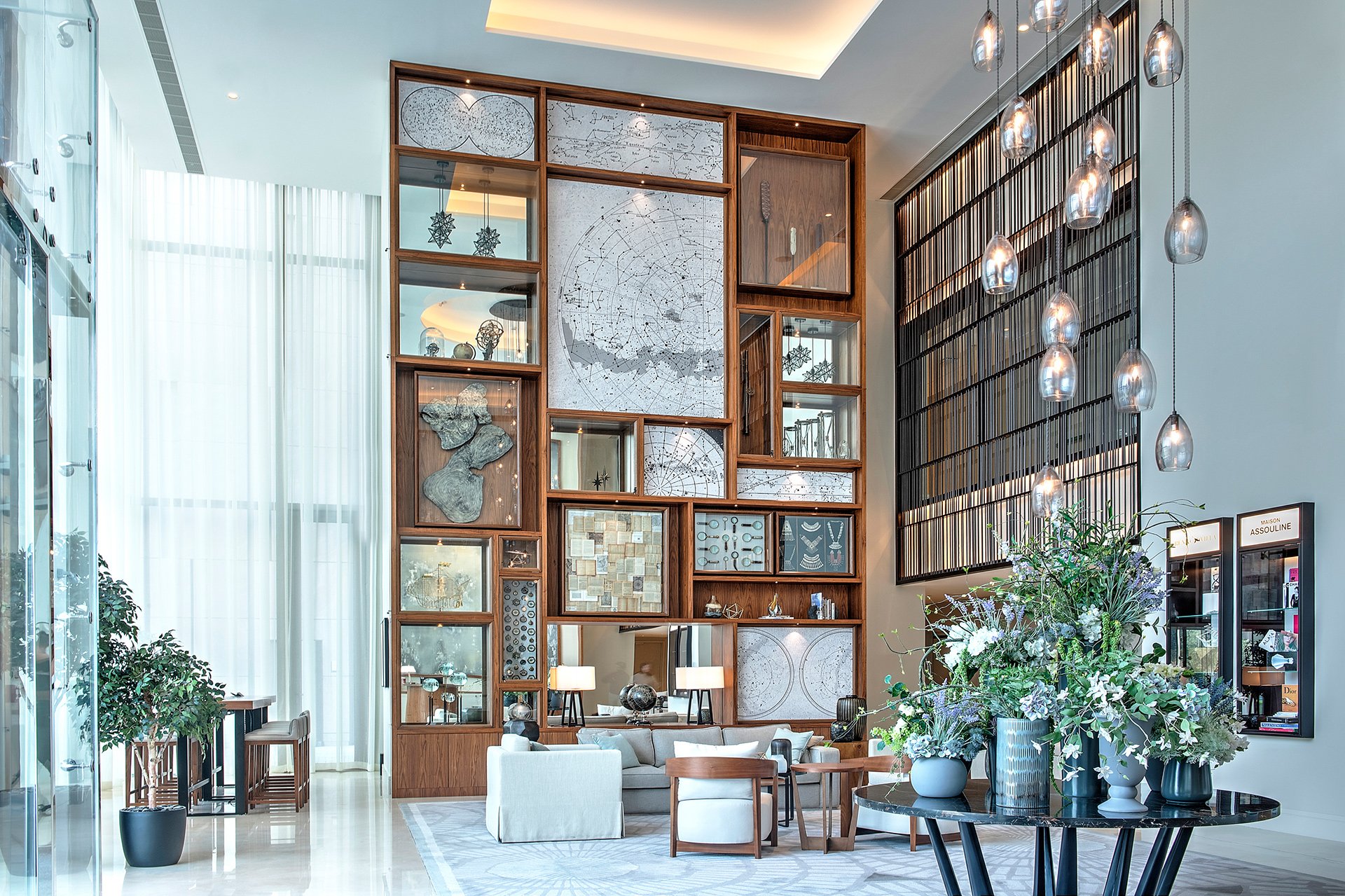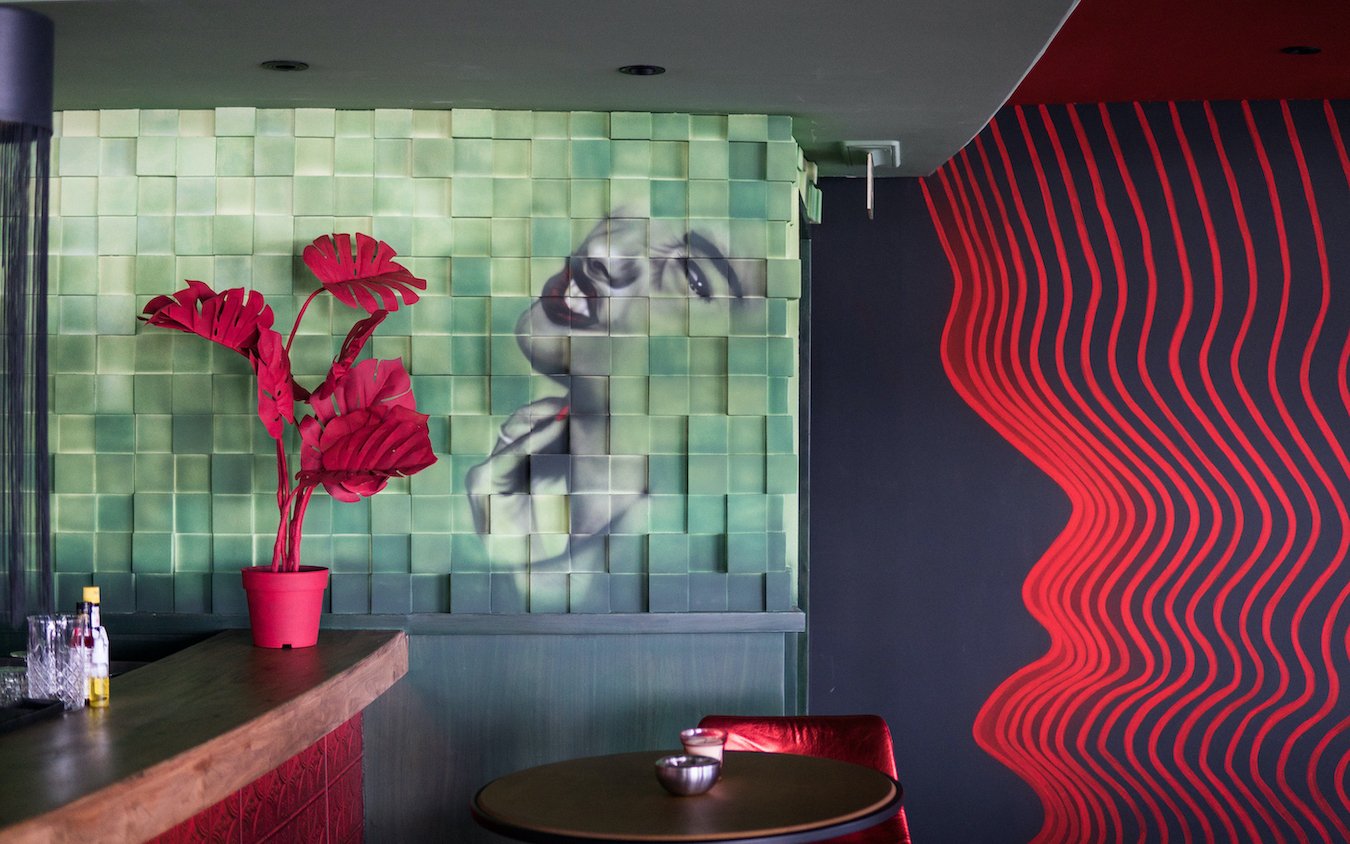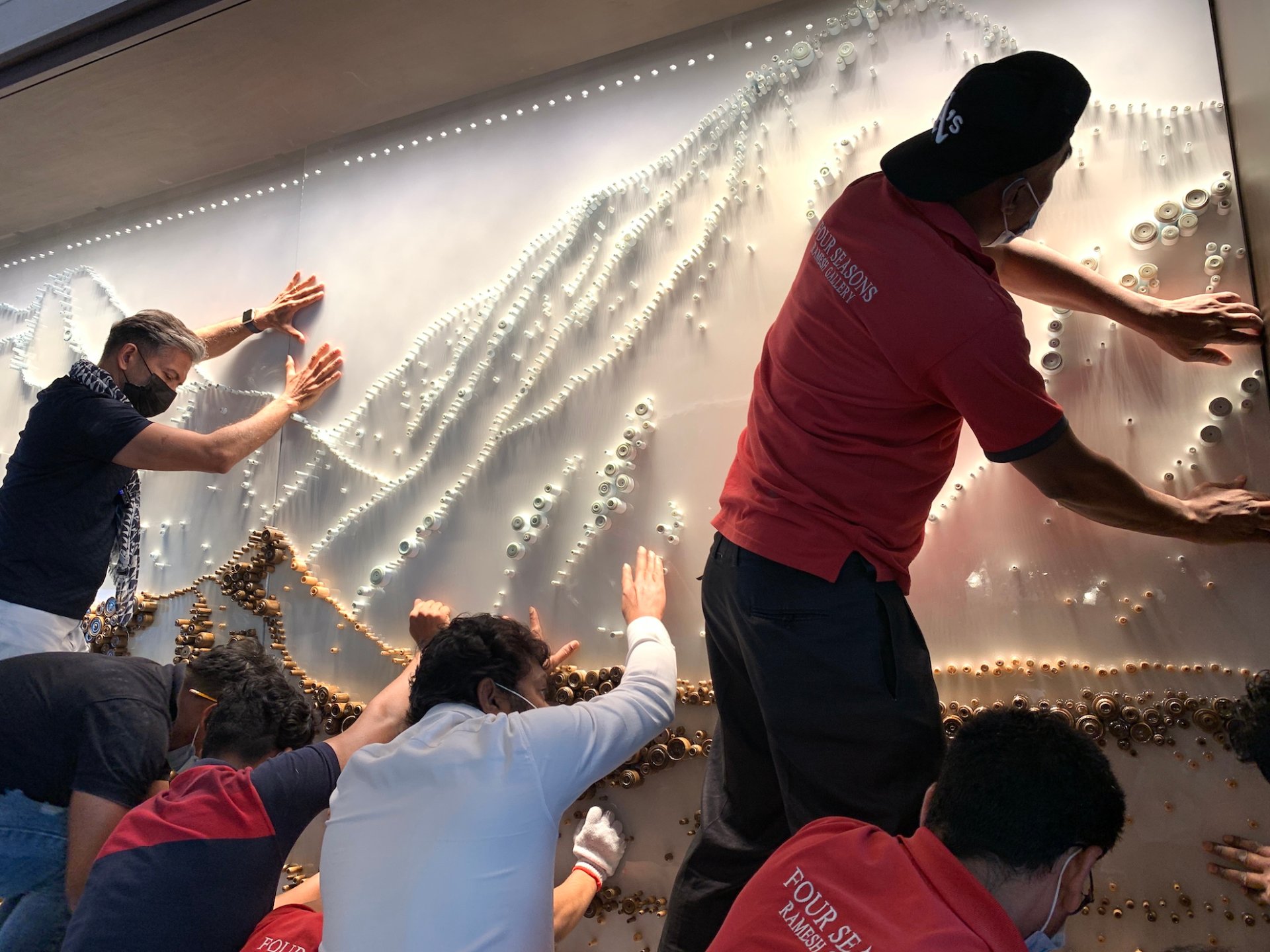Four Seasons Ramesh Gallery
Four Seasons Ramesh Gallery has been offering art consultancy services to homes, corporates and hospitality spaces for the last three decades. The team work closely with design and architectural firms in the region, and since 2000, have been functioning under the artistic guidance of Neel Shukla, Senior Art Director, who brings a unique offering to the design landscape with his large scale installations.
“Dubai has been following international trends for many years, but in the last five years, we have seen tremendous growth in the creative genre. There is a pool of very creative people here who are forming their own trend. Now more than ever, they are not shying away, but instead being bold and loud! And stakeholders are paying more and more attention to the artists, so now, instead of following the proverbial ‘wagon’, we are very much on it taking not the driver’s but maybe the second seat.”
Well, that’s an interesting analogy.
“In the past, the medium was very basic – canvas, paper, sculptural materials. But now, you have such a diverse toolbox – glass, wires, straw, nails – every single noble material has become a piece of creative offering, and the range that we can showcase has become much more diverse. It’s just a matter of how you curate it.
I create large scale installations that require a tremendous amount of engineering, for example, looking at wind load, dead weight, etc. These installations are very much a part of the architecture of the space, and embedded in the DNA of the property.
And has there been a steady increase in demand for such art?
“I have certainly worked harder in the last year, than the past five years combined. I have six projects on the go at the moment. I chose art engineering as my genre, and while it is a difficult field, I realised that this was a much better way to add value to the city and the projects. It’s a much tougher sell to the client, but it is long lasting. You have to consider elements such as waterproofing, earthquake resilience, rusting and the ability to sustain for a few decades at least. Recently, I have created an eight metre flying Octopus for the
We ask Neel about his thoughts on Insta culture driving art in interior design.
“It’s certainly a marketing tool, but I would like to say that true art should be appreciated in a personal way. A good example of this is the Arts Club, a beautiful space with incredible artwork inside, and absolutely no social media allowed, because you are meant to experience the art, not take pictures of it.”
So should art consultation come at the beginning of a project?
“It’s entirely the client’s call. But I would say this, that art is always better expressed with a clean canvas. If you try to squeeze it in earlier on, it may not turn out the way you pictured as the project design undergoes many changes along the way. Where the owners are buying the art, there is no particular agenda and the design can build from that point on. That is more of a higher, blue chip level of collection. But where hospitality is concerned, you are creating an experience, and there is a need for harmony. In this case, an art consultant should be brought in right from the start of the project. On another note, when it comes to your home or personal space, you should really adopt a more laissez faire approach, and let the art evolve on a gradual basis.”

